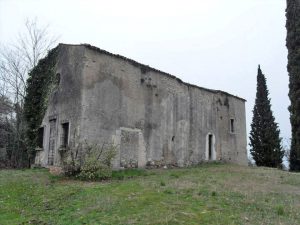Church San Sivino
Church San Sivino
in locality San Sivino between Moniga and Manerba on Valtenesi hills
Church San Sivino It is located on a promontory overhanging the lake; Should date back to at least the seventh century and easily built on a pagan worship site of which some parts have been used, also has some longobard stones was restored in the 16th and 18th centuries. The church has a single nave, marked by round arches that form the camps; The facade is hut style.
This little church is linked to a legend that many in the area know: Towards the 13th century a miller settled in Manerba, and in short it was fortunate to grind wheat for the people of the country; one day however, the water flowing the mill was missing; He went to pray at San Sivino for water to return, but nothing happened, then desperately decided to turn to the devil who, under the lies of a friar and then a knight, presented himself and convinced him to Make a deal with him by entering into a contract; The sign of this agreement was the miller’s handprint and that of the devil’s foot on the stone embedded on the southern wall of the church. After the water returned again, the business returned to be well but when, after years, the miller began to think of his death and the pact, scared for his soul, decided to confess himself promising to donate to the church the mill and the money And thereby obtaining absolution; The fierce demon scoffed all the house and transformed the money into straw; At this point a cross was engraved on the stone of the covenant.
A rational explanation of this stone seems to be that at the time of Pagan pagan rituals such as these were widespread and outlined the sacredness of the place where they were placed; Christianity on the Garda began to spread towards the 4th century AD. Often encountering a strong contrast to the most isolated mountains and valleys, the Church replied mainly in two ways: either transforming them into divine signs of Christian symbols (imprints of the Madonna or saints) or demonizing them as easily successful in the case Of the devil stone of the church San Sivino.
San Sivino, then, seems to derive the name from San Ninian that in the IV-V century, with St. Patrick and St. Colombano, converted Ireland, Brittany, Wales, Cornwall and Scotland to Christianity. It is probable that San Ninian, leaving Rome, would pass in these areas to head north, leaving signs of his passage.

